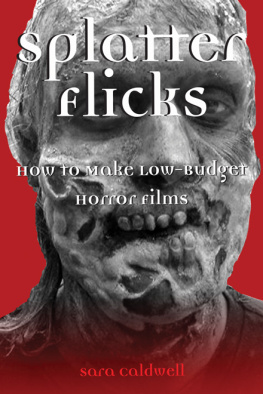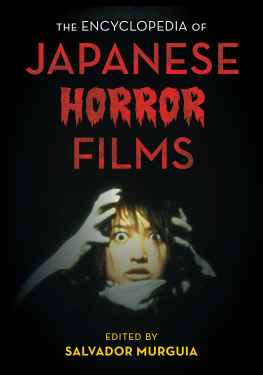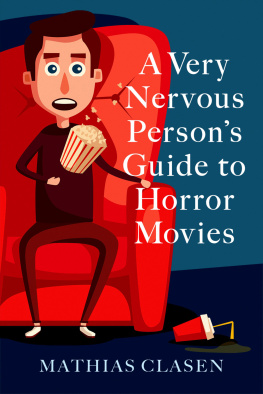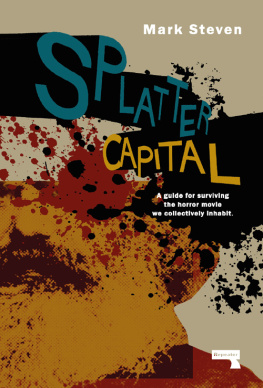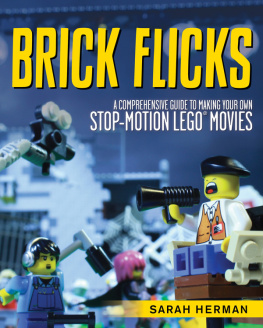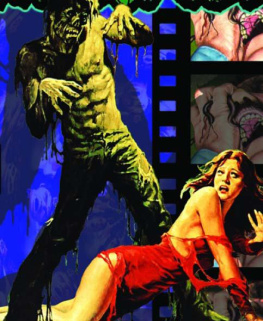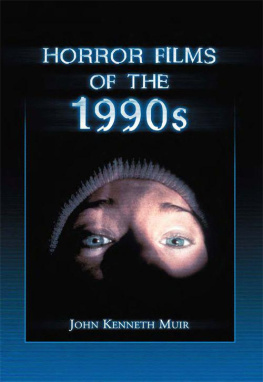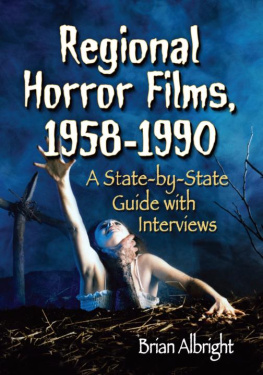
Splatter
flicks
How to Make Low-Budget
Horror Films
Sara Caldwell

To all those brave filmmakers with a demented concept, creative problem-solving skills, and minimal production budgetsembrace the horror!
2006 Sara Caldwell
All rights reserved. Copyright under Berne Copyright Convention, Universal Copyright Convention, and Pan-American Copyright Convention. No part of this book may be reproduced, stored in a retrieval system, or transmitted in any form, or by any means, electronic, mechanical, photocopying, recording, or otherwise, without prior permission of the publisher.
10 09 08 07 06 5 4 3 2 1
Published by Allworth Press
An imprint of Allworth Communications, Inc.
10 East 23rd Street, New York, NY 10010
Cover design by Derek Bacchus
Interior design by Sharp Des!gns, Lansing, MI
Page composition/typography by SR Desktop Services, Ridge, NY
Cover photography: Anthony Pepe/Demonic Pumpkins FX
ISBN: 1-58115-443-7
ISBN: 9781581158472
Library of Congress Cataloging-in-Publication Data
Caldwell, Sara C
Splatter flicks: how to make a low budget horror film/Sara Caldwell.
p. cm.
Includes index.
ISBN 1-58115-443-7 (pbk.)
1. Horror films-Production and direction. 2. Low budget motion pictures. I. Title.
PN1995.9.H6C35 2006
791.43'6164-dc22
2006016401
Printed in Canada
To all those brave filmmakers
with a demented concept,
creative problem-solving skills,
and minimal production
budgets-embrace the horror!
Acknowledgments
Thank you to Tad Crawford, publisher, and Nicole Potter-Talling, senior editor, of Allworth Press for their continued belief and encouragement in the development of my third book. As always, I greatly appreciate Michael Madoles efforts with the promotion, Jessica Rozlers immaculate and all-seeing eyes on copyediting and editorial suggestions, as well as all of the other Allworth staff for their exceptional support. Thanks also to my good friend Jerry Vasilatos of Nitestar Productions for his invaluable help with research.
My immense gratitude to the film professionals who generously shared their experience, insights, and snippets of horror: screenwriter Lisa Morton; filmmakers Michael Hein of MooDude Films, TJ Nordaker, co-director of The Janitor, Larry Fessenden of Glass Eye Pix, and Stevan Mena, writer/director of Malevolence; cinematographer Bud Gardner; production designer Katherine Bulovic; wardrobe designer Lynn McQuown; special effects artists Anthony Pepe of Demonic Pumpkins FX and Randy Cabral, special effects coordinator of the Charmed television series; editor Ross Byron; composer Vincent Gillioz; and distributor Alex Afterman of Heretic Films.
Many personal thanks to family and friends. To my parents, Robert and Pilar Coover, who raised me on the best of cinema, from the esoteric to the macabre, from very early in life; to my children, Dylan and Chloe, for sharing many a fun fright night on the couch with me; to Mark Conroy for accepting my darker side and loving my lighter one; and to my great gal pals Joni Brander, Cathleen Fox, April Victory, Jade Mansueto, Kerry Luby, and Sunni Boswell-you know why!
Thanks also to my colleagues at College of the Canyons for giving me the opportunity to educate and inspire a new generation of filmmakers and to my students for demonstrating that the passion for independently minded art (and horror) still lives on.
As in every other book I have written, I want to acknowledge Dr. Daniel F. Bassill, President and CEO of the Tutor/Mentor Connection in Chicago, Illinois. Dan battles the daily demons for children in extreme poverty and has striven for almost thirty years to show them a brighter path. As such, he is a rare hero not often found on the silver screen. Likewise is my former tutee, Isaiah Brooms, a remarkable young man who has crossed many dangerous bridges to find his place in the world. Similar to independent filmmaking, fulfilling dreams starting from the point of abject poverty is a long-term process that takes dedication, untold effort, and a dash of humility, qualities that make the end results well worth the journey.
Fifteen percent of royalties from this book are being donated to the Tutor/Mentor Connection ( www.tutormentorconnection.org ).
Introduction
I was sixteen when my father took me to a screening of Night of the Living Dead with a warning that it was the scariest movie ever made. I had to admit that it was pretty damn scary, and more than two decades later I still cower at the opening graveyard scene. Thanks to my parents broadminded outlook on life, I was weaned on diverse cinema and grew to love horror and science fiction. I watched almost every classic B-movie out there as a kid, from the 3-D Creature from the Black Lagoon to The Wolf Man. I was also a huge Twilight Zone fan, never missing a single episode.
As I ventured through life and into a film/video career, my passion for horror never waned. Now, teaching college film and screenwriting courses, I see a similar passion in my students, the majority of whom base their early projects on this seamy genre. Its really no surprise. Young people are attracted to the dark side as they explore the nuances of life, questioning what they held to be true in childhood as intellect blooms. What more powerful and entertaining form of human exploration is there than horror? Effectively done, it probes and unmasks our worst fears and insecurities, its allure making us both master and slave to our own demons. Its also just plain fun.
While many of my students pay little heed to old black and white films, I point out that some of the best classic horror films were made even before their parents or grandparents were born. The early 1930s were a burgeoning era in Hollywood horror (primarily produced through Universal Studios) and audiences witnessed Island of Lost Souls, Frankenstein, and The Mummy, to name a few. These early films, influenced by German expressionist silent cinema, were Gothic in style, with settings that included creepy castles, spooky mansions, and foggy terrain. The stories were often derived from Gothic or Victorian novels, such as Mary Shelleys Frankenstein or Bram Stokers Dracula. The success of these films relied on a rather predictable but satisfying structure and a fun escape for Depression-weary audiences. They typically included a heroine who would be lured into the villains trap and a hero who had to fight to save her for the sake of true love. Whether a mad scientist or a count in a castle, the villain was often charismatic and powerful and had a unique sidekick to help him accomplish his evil deeds. Interestingly, plot structures havent changed much over time, though characterization, especially that of the heroine, certainly has, as will be explained later.
The earliest horror gems were made before the Hays Code was strictly enforced. The Hays Code (nicknamed for one of its administrators and former postmaster general, Will H. Hays) was adopted in 1930 and set film guidelines on sex, violence, religion, and crime, although it was not strictly enforced until the establishment in 1934 of the Production Code Administration. This window of time between adoption and enforcement enabled a few rule-breakers to seep through. For example, Tod Brownings Freaks was released in 1932, though it was banned in England for thirty years due to its raw portrayal and sexual overtones. The Hays Code was abandoned by the Motion Picture Association of America (MPAA) in 1967 and replaced with a film rating system that exists today. Until then, most films were released with a minimum of extreme violence.
Next page
